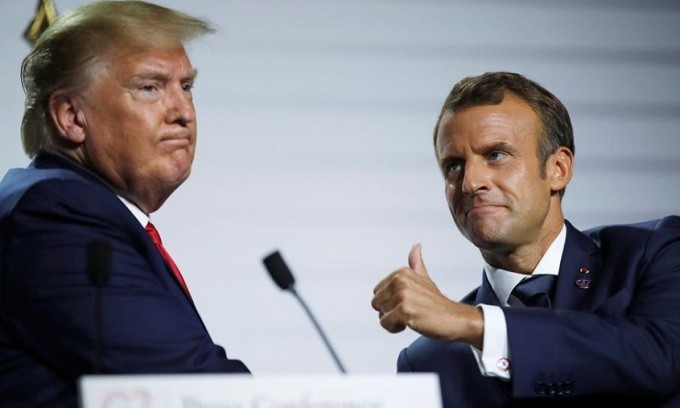The G7 Summit 2019 took place amid growing concerns about the risk of global economic decline, as well as the increasingly widened divisions between the United States and members of the club of “super-rich countries”, particularly its European allies, in many issues from trade policies to the Iranian nuclear deal and the environment. Perhaps so, “fighting inequalities” was chosen by the host country as the major theme of the 45th meeting of leaders of the world’s leading developed economies in the south-western French city of Biarritz last week, with key discussions on gender equality, combating climate change, and cooperation in Africa development, among others. These topics are clearly not hot enough, compared to a series of fiercely emerging issues, such as the trade war, maritime security in the Gulf, or the United Kingdom leaving the European Union (EU), also known as Brexit.
Differences in viewpoints among the G7 members were the reason for France to adjust not only the content, but also the way of discussion during the conference in Biarritz. In order to avoid repeating the G7 Summit 2018 scenario in Canada, when the US “stood alone aside” and refused to approve the Joint Declaration, France decided not to have a communique at this year’s summit, but instead only focusing on discussing to achieve specific results aiming to bring about changes. France also invited leaders from many countries to attend the meeting, such as India, Australia, Spain, Chile and some African nations. The “renewal”, as explained by France, aimed to address the limitations in G7’s current global governance methods. According to Paris, the participation and contribution of regional-level influential countries and partners would help form a wider international alliance and work out more comprehensive solutions to fight every form of inequality in an effective and legal fashion.
Despite the huge efforts made by the host country, they still could not help narrow the differences between the G7 members, particularly between the US and many partners, in both the main discussion topics and the sidelined ones, with the trade and environment issues in particular standing out. Once being of easy consensus within G7, the economy and trade now witness many arising disagreements, particularly as the trade war between the US and China is being quickly heated with retaliatory moves between the world’s two leading economic powers. While European members, along with Japan and Canada, expressed their concern, the US took advantage of the G7 forum to entice its allies in the race against China. Therefore, the G7 Summit still stood at the level of acknowledging the views of the parties, but yet to issue any conclusions. Similarly, debate also erupted in linking trade with anti-climate change, as the efforts to prevent Amazon forest fires in Brazil were turned into a term to bargain for the ratification of the trade agreement between the EU and the South American Common Market (Mercosur). The difference between the US and G7 partners was also reflected in many issues, such as maintaining the Iranian nuclear agreement and uniting to ensure security in the Gulf.
In fact, G7 is no longer the group of the world's largest economies due to the absence of the second largest economy China and the sixth largest economy India. Meanwhile, with the growing population, the exhausted resources and the seriously destroyed environment, the world today is facing problems at trans-national and inter-continental levels, and the global governance following an outdated model from several decades ago, for a small group of countries like the G7, is no longer effective. The growth of emerging economies in Asia, Africa and South America, with a high level of mutual dependence among countries, also poses a major challenge to G7’s leading role.
An additional summit failing to bridge the differences shows the arising tensions and the different methods in handling hot issues between the G7 member countries, especially as they do not look towards the same direction and do not share the common goal for global development and stability.
















